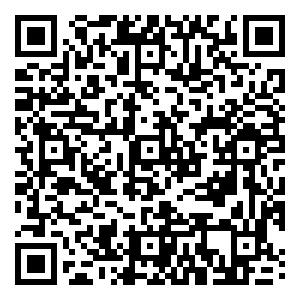Temporal and spatial characteristics of network attention to show cave:A case study of five beautiful show caves
-
摘要: 旅游网络关注度是旅游者需求状况和行为习惯在网络上的直观表现。基于百度指数,运用变异系数、基尼系数等定量测算方法,以中国最美五大旅游洞穴为例,对中国旅游洞穴网络关注度的时空特征进行了研究。研究结果显示:旅游洞穴在网络上的关注度较高,并呈现上升的态势,月变化曲线呈双“M”形;网络关注度的省际差异明显,关注度较高的区域主要是洞穴所在的省(市)、邻近省(市)以及东部经济发达省份;旅游洞穴网络关注度的高峰、低谷与国内旅游活动的季节性差异具有耦合性,洞穴的吸引力和吸引范围具有明显的区域性。研究结论为洞穴旅游的发展提供了启示:应充分重视互联网在景区营销中的作用,将网络关注度作为景区经营管理的重要工具,加强与周边景区(点)的合作。Abstract: Cave tourism is an important form of tourist activities, which refers to the natural karst cave as the basis, through the transformation and utilization of caves, to carry out sightseeing, adventure, entertainment, medical and other tourist activities. Tourism resources of karst caves are very rich in China, where more than four hundred karst caves have been developed for tourism purpose. They are the most representative show caves in China which are selected in the most-beautiful-show-cave activity in 2005. Network attention rate of tourists is an intuitive measurement of their demand conditions and behavior habit on the Internet. Analyzing the spatial and temporal characteristics of network attention to show caves and their causes facilitates to delineate current development of show caves and the diversity of tourism demands, which can provide scientific guidance for the development of karst cave tourism. Based on the methods of Baidu index, statistical variation coefficients and Gini coefficient, this paper analyzes temporal and spatial characteristics of network attention rate to show cave in China. Time dimension analysis includes two levels, year and month. Spatial dimension analysis is on a provincial basis, to explore the inter-provincial differences of the attention. The results show that the network attention to show cave is of a high degree and shows a tendency of growth. The monthly changes exhibit a double M-shaped curve. The provincial differences of network attention are obvious. The provinces with higher attention concentrate in native places, neighboring provinces and economically developed eastern areas. This research also indicates that there is strong coherence between the fluctuation of network attention to show cave and seasonal differences of tourism activities. The attraction and attraction scope of karst cave resources are provincially different. The research provides some enlightenment for the development of cave tourism, for which more attention should be paid to the role of internet in the marketing of karst caves, take the network attention rate as an important measure for the management of show cave, and strengthen the cooperation with surrounding scenic spots.
-
Key words:
- show cave /
- Baidu index /
- network attention /
- temporal and spatial characteristics
-
[1] 中国互联网络信息中心. 第37次中国互联网络发展状况统计报告[EB/OL].(2016-01-23)[2016-08-10].http://www.cnnic.net.cn/hlwfzyj/hlwxzbg/hlwtjbg/201601/t20160122_53271. htm. [2] Andrew P, Yingmiao Y. The internet and the occidental tourist: Ananalysis of Taiwan’s tourism websites from the perspective of western tourists[J]. Information Technology and Tourism, 2005,7(7): 91-102. [3] 路紫,刘娜, Zui Z. 澳大利亚旅游网站信息流对旅游人流的导引:过程、强度和机理问题[J].人文地理,2007,22(5):88-93. [4] 杨敏,马耀峰,李天顺,等. 网络信息与入境旅游流的V-R耦合关系分析:以澳大利亚入境旅游流为例[J].干旱区资源与环境,2012,26(6):214-219. [5] Lexhagen M. The importance of value-added services to support the customer search and purchase process on travel websites[J]. Information Technology and Tourism,2005,7(2):119-135. [6] Bing P, Daniel R. Online information search: Vacation planning process[J]. Annals of Tourism Research,2006,33(3):809-832. [7] 王赛兰,杨振之. 面向大数据的旅游微观数据信息平台研究[J].四川师范大学学报(社会科学版), 2015,42(1):54-61. [8] 林炜铃,邹永广,郑向敏. 旅游安全网络关注度区域差异研究:基于中国31个省市区旅游安全的百度指数[J].人文地理,2014,29(6):154-160. [9] 李山,邱荣旭,陈玲. 基于百度指数的旅游景区络空间关注度:时间分布及其前兆效应[J].地理与地理信息科学,2008,24(6):102-107. [10] 马丽君,孙根年,黄芸玛,等. 城市国内客流量与游客网络关注度时空相关分析[J].经济地理,2011,31(4):680-685. [11] 龙茂兴,孙根年,马丽君,等. 区域旅游网络关注度与客流量时空动态比较分析:以四川为例[J]. 地域研究与开发,2011,30(3):93-97. [12] 黄英,周智,黄娟. 大数据时代乡村旅游发展的时空分异特征[J]. 浙江农业学报,2014,26(6): 1709-1714. [13] 李霞,曲洪建. 邮轮旅游网络关注度的时空特征和影响因素:基于百度指数的研究[J]. 统计与信息论坛,2016,31(4):101-105. [14] 陈伟海,朱德浩. 中国的旅游洞穴[A].陈安泽,卢云亭,陈兆棉.旅游地学论文集(第十集)[C]. 北京:中国林业出版社,2005:267-270. [15] 陈诗才. 洞穴旅游学[M].福州:福建人民出版社,2003. [16] 杨晓霞,向旭,袁道先,等.喀斯特洞穴旅游研究综述[J]. 中国岩溶,2007,26(4):369-377. [17] 吴发明,何小芊,罗梦悦.万年县神农宫旅游资源综合评价与开发对策[J].中国岩溶,2016, 35(2):233-242. [18] 潘艳喜,周忠发,李坡,等.旅游洞穴空气环境时空变化特征及其影响因素:以贵州省绥阳大风洞为例[J].中国岩溶,2016,35(4):425-431. [19] 李龙,殷红梅.旅游活动对龙宫景区不同植被层物种多样性的影响[J].中国岩溶,2013,32(2):218-224. [20] 百度百科. 百度指数[EB/OL].(2010-05-07)[2016-08-10].http://baike.baidu.com. [21] 黄先开,张丽峰,丁于思. 百度指数与旅游景区游客量的关系及预测研究:以北京故宫为例[J]. 旅游学刊,2013,28(11):93-100. [22] 蔡炳贵,沈凛梅,郑伟,等. 本溪水洞洞穴空气CO2浓度与温、湿度的空间分布和昼夜变化特征[J]. 中国岩溶,2009,28(4):348-354. [23] 杨明德. 岩溶洞穴旅游资源特性与开发保护[J].中国岩溶,1998,17(3):51-56. [24] 保继刚. 喀斯特洞穴旅游开发[J]. 地理学报,1995,50(4):353-359. [25] 何小芊. 江西省岩溶洞穴旅游资源特征及其开发[J].中国岩溶,2014,33(1):111-117. -

 点击查看大图
点击查看大图
计量
- 文章访问数: 2560
- HTML浏览量: 419
- PDF下载量: 1164
- 被引次数: 0



 下载:
下载:
